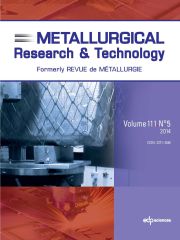Article contents
Selection of vacuum pump system for steeldegassing
Published online by Cambridge University Press: 03 June 2014
Abstract
Steam ejector vacuum pumps (SVPs) are mainly used on larger melt sizes up to 350 t inintegrated steel plants because of the availability of steam. The use of dry operatingmechanical vacuum pumps (MVPs) for steel degassing has made a tremendous step forward inthe past 10 years but is still confined to melts below 150 t while its progress towardslarger melt sizes is not completed. Besides the consideration of investment and operatingcosts there is no restriction in using any type of modern vacuum pump system for allvacuum processes and plant designs. Both systems fulfil all metallurgical requirements.Considering the significant savings in operating cost offered by MVP systems it is worthreconsidering the efforts for reducing air leaks, the use of protective gases and pressurelosses between the pump set and the metallurgical reaction vessel. Both systems have madeprogress in energy optimising but the MVPs have a striking energy advantage. Only theoverall costs should be considered, including those necessary to meet emission constraintsand safety standards, and only the pressure prevailing at the reaction vessel is to beconsidered when comparing vacuum pump systems. Also, the means and use of dust abatementsystems should be reconsidered since they offer cost savings by reducing the frequency ofcleaning, less wear, little sludge handling and the significantly lower design suctioncapacity of SVP systems. The SVP mass flow need is to be corrected by a specialcoefficient before being applied to the volume conveying MVPs. Depending on theoperational pressure required for the pump design, MVP systems can reach the sameperformance at the reaction vessel with much less mass flow capacity than that needed by aSVP system.
Keywords
- Type
- Research Article
- Information
- Copyright
- © EDP Sciences 2014
References
- 1
- Cited by


